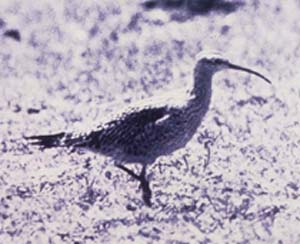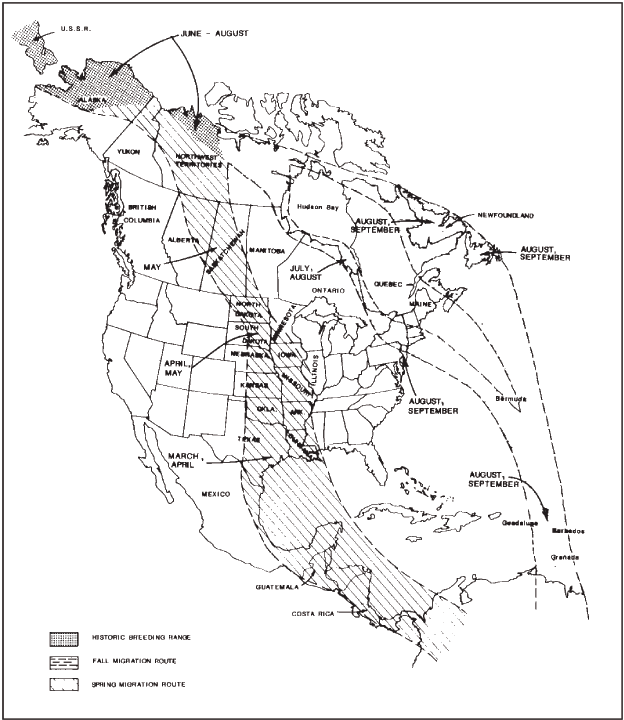Eskimo Curlew (Numenius borealis)

TPWD ©
- Texas Status
- Endangered
- U.S. Status
- Endangered, Listed 3/11/1967
- Description
- The Eskimo curlew has warm brown feathers with white speckles. Cinnamon-colored feathers line the undersides of their wings. They have long, dark green, dark brown, or dark grey-blue legs and are about 12 inches in length.
- Life History
- In the mid-1800's, huge flocks of Eskimo Curlew migrated north from South America to their nesting grounds in the Alaskan and Canadian Arctic. Historic reports tell of the skies being full of Eskimo Curlews as they migrated through the prairie states and provinces. One historic report describes a single flock feeding in Nebraska that was said to have covered 40 to 50 acres of ground. During migration, they fed on grasshoppers and other insects on the grasslands of the central United States.
Between 1870 and 1890, unrestricted hunting rapidly reduced populations of Eskimo Curlew. Considered very good to eat, the birds were killed by thousands of market hunters, just as the Passenger Pigeon had been years earlier. The curlew's lack of fear and habit of traveling in large flocks made it an easy target. - Habitat
- Arctic tundra and open grasslands provide habitat for Eskimo curlews.
- Distribution
 Eskimo curlews migrate from breeding grounds in the Arctic tundra through the North American prairies to wintering grounds on the Pampas grasslands of Argentina.
Eskimo curlews migrate from breeding grounds in the Arctic tundra through the North American prairies to wintering grounds on the Pampas grasslands of Argentina.- Other
- In 1916, nongame bird hunting in the United States was stopped by the Migratory Bird Treaty Act, but the Eskimo Curlew did not recover. Conversion of native grasslands to cropland, in the South American wintering area and along the migration route through the tall grass prairies of the United States, is thought to be the reason for the birds' failure to recover.